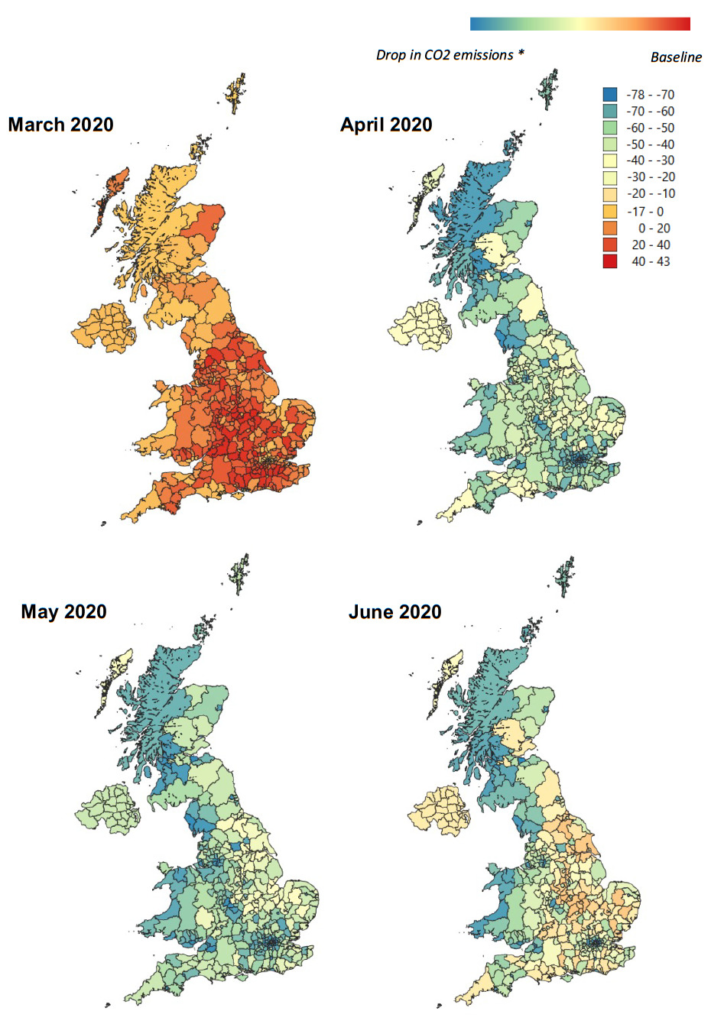by Kadambari Lokesh
Commuter journeys make up 15% of all journeys in the UK, the second-highest, next to shopping. DecarboN8’s ‘COVID-19 and travel patterns’ research team has published findings on how the Covid-19 travel restrictions effected commuting and carbon emissions in 2020. The study asks: What impact did the COVID-19 “work from home if you can” policy have on commute patterns and CO2 emissions?
We used mobile phone data to understand how commuting changed in different places around the UK. Then we looked at other factors like types of industry in different places and levels of car ownership. We found that homeworking resulted in an overall CO2 reduction of 17-60% on average.
Places that saw the largest carbon reductions tended to be areas with higher levels of car ownership and a higher prevalence of office jobs that can easily be done remotely. Disruptive events like the Covid-19 lockdown can be extremely important in demonstrating how lifestyle changes can significantly reduce travel demand and carbon emissions.
How we did it
We used mobile phone data from February to June 2020, from O2 mobile, to study the change in commute journeys. O2 connects with 23 million devices in the UK (25% market-share) offering movement insights, when connecting with the mobile network. We looked at commuter journeys in 375 Local Authority Districts. We also incorporated travel-based statistical data and emissions data from a variety of sources.
What we found
This study revealed that during lockdown the overall carbon emissions from commuting fell to roughly 30-38% of what they had been before lockdown. Commuter traffic increased by 20-25% at the beginning of March 2020, most likely in preparation for the looming lockdown. It then dropped sharply just before 23rd March as businesses prepared for lockdown. May 2020 recorded the highest levels of commuter carbon reduction, about 40 to 78%. In January and February of 2021 52% of UK workers were working from home. In addition, 90% say they want to continue homeworking after Covid-19 restrictions have been lifted.
Our study used Covid-19 travel adaptation and carbon reduction data at a district-level, along with data about the types of industry in each district. We were looking for links between specific job sectors and levels of carbon reduction. We found that the top 20% of districts with the greatest CO2 emission reduction were those with the highest proportion (40.3%) of specific industry roles which could be worked from home. These areas also had the highest levels of car ownership.
Right now transport policymakers are under pressure to come up with strategies for “green recovery”. There is also increasing interest in policies supporting home working. Now is the time to gather evidence on how policymakers can effectively reduce travel demand while maintaining economic productivity. It may be ambitious to speculate as to how commuter travel could change once travel restrictions have been lifted. The next step is to explore what types of policies would enable and encourage commuters to make similar lifestyle changes once the pandemic is over.


